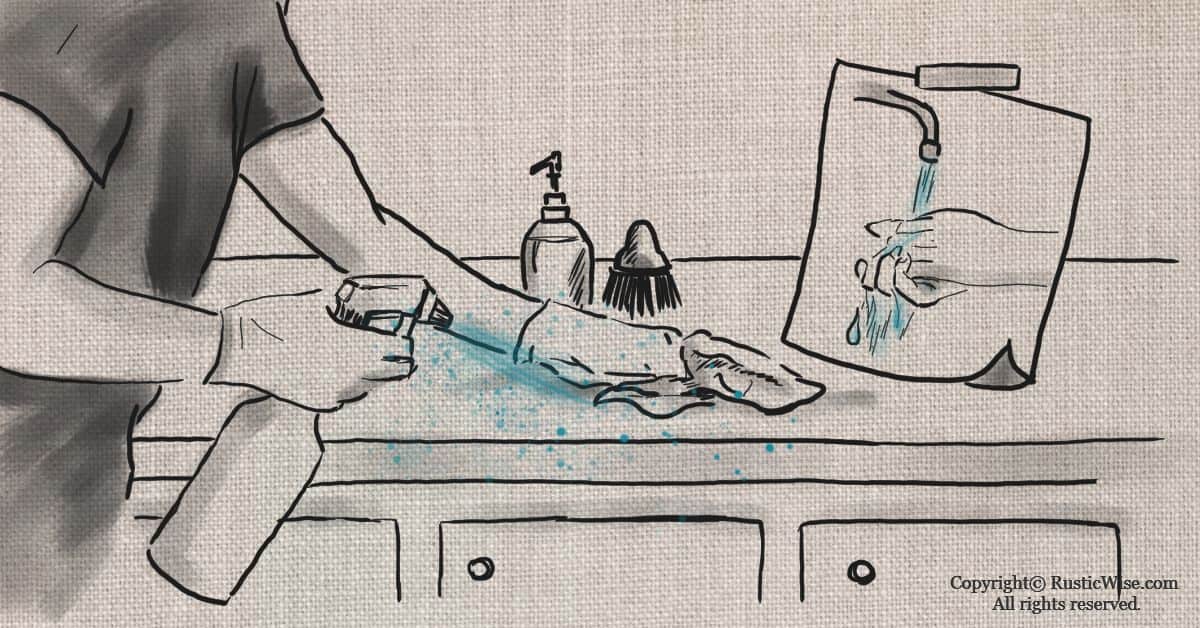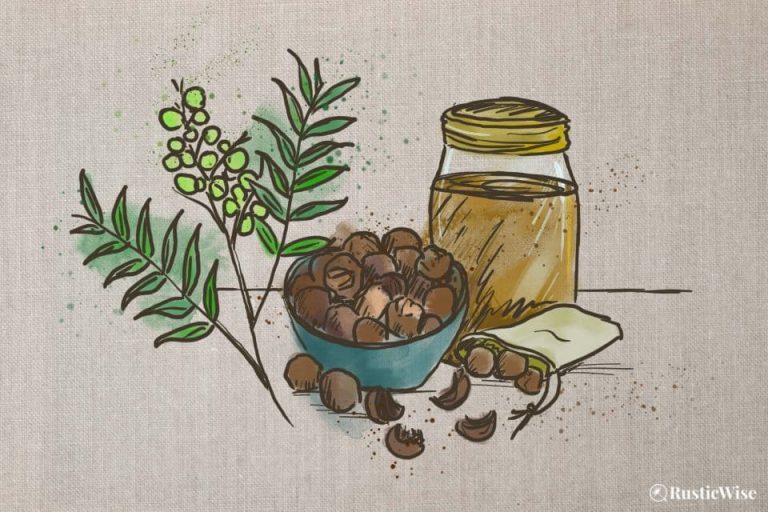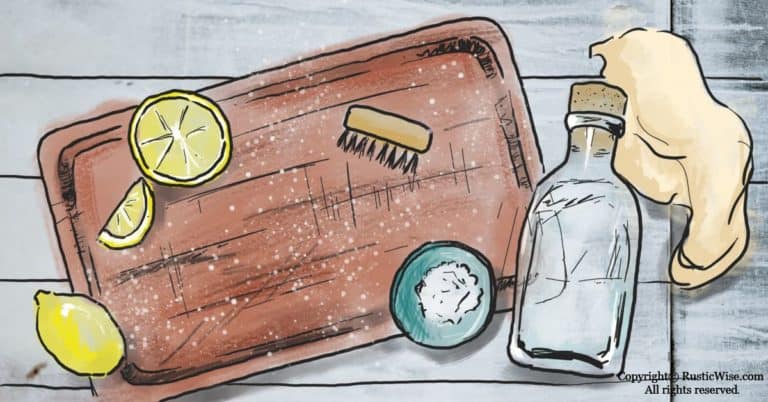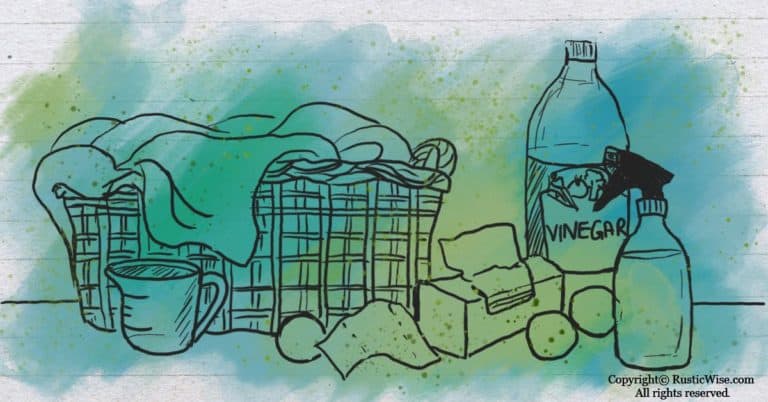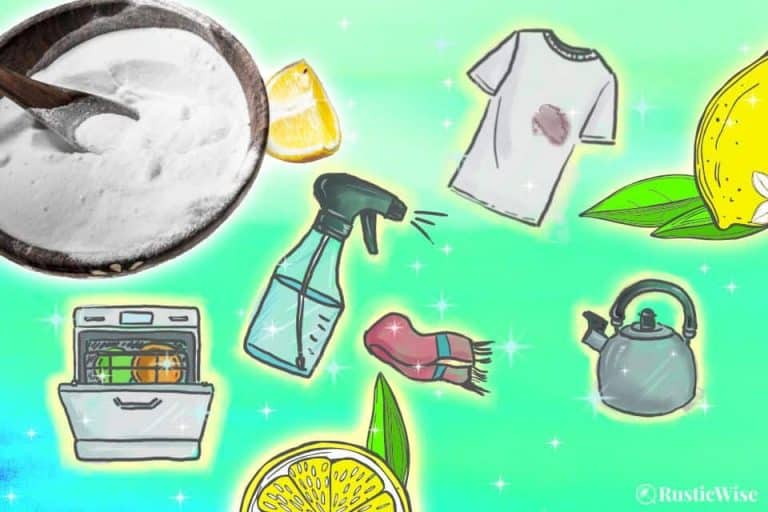Basic Principles of Sanitation at Home
What does it mean to be sanitary? In a nutshell, sanitation refers to keeping yourself and your environment clean and healthy by keeping it free of harmful contaminants and germs. This is done in a variety of ways from proper handwashing, basic personal hygiene, proper food and kitchen sanitation, and proper housing. We’ll go over the basic principles of sanitation as it pertains to you and your home.
The global pandemic has caused us to reevaluate matters of personal cleanliness and food safety at home. The practices of proper hand washing and sanitizing surfaces has been pushed to the forefront of our collective consciousness.
While being a germaphobe is a real pathological fear (and nothing to poke fun of), being germ-conscious can help restore a sense of order, calm, and safety in our own personal abodes for ourselves and our loved ones.
Now is a good time to review, evaluate, and make any necessary changes to our personal habits at home to protect ourselves from contaminants and disease. Let’s take a look at basic principles of sanitation at home.
Definition of sanitary (according to Merriam-Webster): 1: of or relating to health sanitary measures 2: of, relating to, or used in the disposal especially of domestic waterborne waste a sanitary sewer system 3: characterized by or readily kept in cleanliness sanitary packages
What are the basic principles of sanitation at home?
Proper housing plays a vital role in the sanitation and comfort of your home. This includes elements such as proper plumbing to ensure a sanitary water supply, proper refrigeration for food safety, adequate sleeping space, and the absence of pests which can carry diseases.
The Centers for Disease Control and Prevention (CDC) outlines eight ways to protect your home from contaminants:
- Have a safe and sanitary water supply.
- Protect your water supply from contamination and pollution.
- Have adequate sanitation of toilets to minimize the transfer of disease.
- Protect the interior of your home from sewage contamination.
- Minimize any unsanitary conditions near your home.
- Protect your home from vermin and pests which may play a role in transmitting disease.
- Have adequate refrigeration and food storage to keep food and milk fresh.
- Have sufficient sleeping areas with adequate space to minimize the “danger of contact infection.”
How does your personal dwelling stack up to these eight principles?
Management of water and water quality is a key issue in household sanitation.
Access to clean drinking water is not equitable in many developed countries including Canada and the United States. Many residents of rural areas still get their water from private wells, or other sources of unregulated water systems. The U.S. EPA estimates there are roughly 42 million Americans (mostly in rural areas) who get their water from unregulated water systems such as private wells.
These sources of water may contribute to the transmission of waterborne diseases.
Why it’s important to apply basic principles of sanitation at home
Cleanliness and sanitation are two sides of the same coin. While it’s not necessary to have a tidy home in order to have a sanitary one, the two definitely go hand-in-hand. It’s much easier to keep a clean and sanitary kitchen for example, when it’s not filled with clutter.
“The objective of cleaning is not just to clean, but to feel happiness living within that environment.”
—Marie Kondo
The basic principles of sanitation can be seen as a daily approach and practice on how we take care of ourselves, our home (including maintenance and repairs), and how we prepare and store food.
Here are a few reasons why it’s important to keep our homes sanitary:
- Reduces the transmission of illnesses ranging from basic cold and flu, to more serious diseases such as Covid-19;
- Prevents foodborne illnesses from foodborne germs such as salmonella, norovirus, E. coli, listeria, and Clostridium botulinum (botulism);
- Prevents waterborne diseases from poor water supply sources, and inadequate sewage management;
- Creates a more peaceful, orderly, and healthy living environment.
Personal Hygiene
It all starts with good personal hygiene. After all, we don’t want someone who hasn’t washed her hands or had a shower in weeks preparing the food we eat, would you?
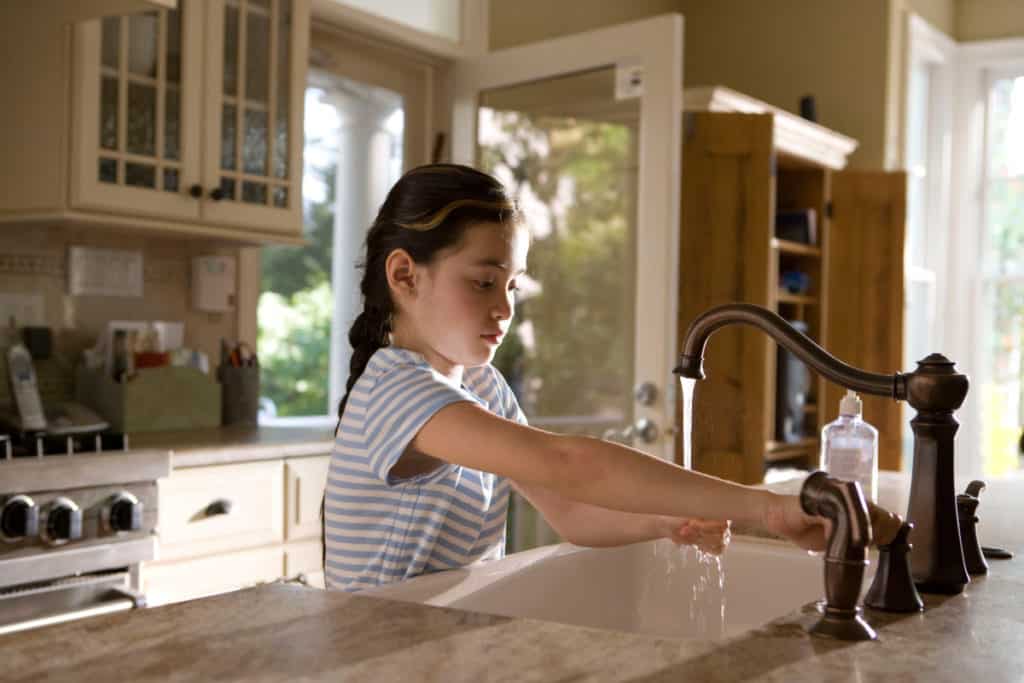
Proper handwashing
By now, we all know the basics of good handwashing, and that handwashing is an effective way to prevent the spread of germs. In particular, germs are transferred between people and surfaces—you should avoid touching your eyes, nose, and mouth.
As a review, here’s what the CDC recommends:
Wash your hands with soap and water for at least 20 seconds, or use hand sanitizer with an alcohol content of 60 percent or higher.
So when should we wash our hands? We should wash our hands:
- Before, during, and after food preparation
- Before and after eating or drinking
- After using the bathroom
- After coughing, sneezing, or blowing your nose
- After touching animals, or caring for your pet (including feeding and cleaning)
- After touching garbage
- Before and after caring for someone who is sick
- Before and after changing diapers, or helping someone use the toilet
- Before and after bandaging cuts and wounds
In addition to these times, you should also wash your hands before and after putting on a mask.
How often should we shower?
While many North Americans have gotten into the habit of daily showering, it might actually be overkill. Unless of course, you have good reason to do so (after a heavy workout, or doing dirty yard work, for example), a shower every day isn’t necessary.
Showering every day strips our skin and hair of its natural, healthy and protective oils, and may actually contribute to skin issues.
According to Harvard Health, showering several times each week is enough. Short showers that are between 3-4 minutes with a focus on cleaning the underarms and groin area should suffice.
Reducing how often we shower also helps reduce household water consumption.
Kitchen Sanitation and Safe Food Handling
According to the World Health Organization, one in 10 people fall ill from contaminated food each year.
The preparation of food and following proper food hygiene plays a vital role in a healthy, happy home.
So how do we prevent foodborne illnesses?
The Canadian Centre for Occupational Health and Safety (OHS) outlines a few important steps kitchens should take to minimize foodborne illnesses:
- Clean: Clean hands and clean work surfaces regularly.
- Separate: Keep raw meat, poultry, and seafood away from other foods.
- Cook: Cook all foods according to guidelines.
- Chill: Keep foods that are supposed to be cold, cold, and properly store foods before and after cooking.
Food preparation best practices
The OHS has a few recommendations for operating a commercial kitchen, with most tips applicable to a home kitchen too. Here’s a summary:
- Follow proper handwashing guidelines.
- Do not prepare food if you’re ill.
- Tie back hair, or wear hair nets when preparing food. Did you know the average person loses around 50 hairs a day?
- Cover any cuts on hands with a bandage and wear a protective, clean glove.
- Avoid touching food with your hands when possible. Instead, use utensils if possible.
- Use a clean spoon every time you sample food.
- When setting the table, touch only the handles of utensils.
- Use a dedicated clean towel to dry hands (don’t wipe hands on your pants, or apron).
- Keep nails trimmed and clean. Avoid wearing nail polish which can get into food.
- Follow proper food storage guidelines (keep certain foods cold, others dry, etc.).
- Avoid wearing jewellery when preparing food (especially rings) as bacteria may collect on it.
- Keep garbage away from food prep areas.
- Regularly clean work surfaces, mop floors, and launder towels.
Tip: Designate certain cutting boards solely for raw meat, poultry, and seafood to avoid cross-contamination.
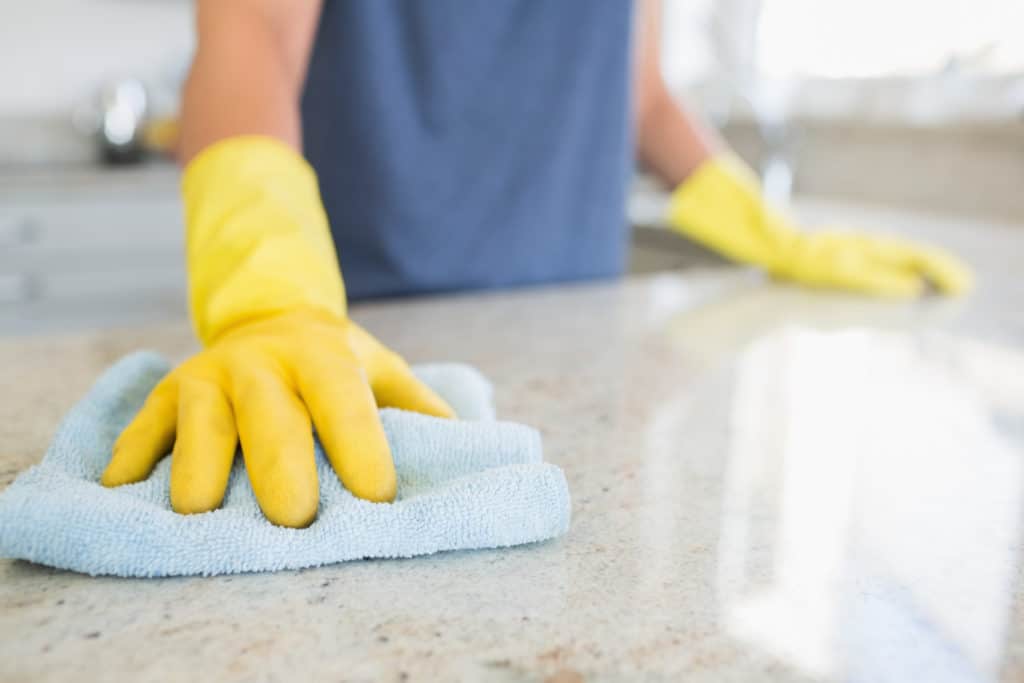
About kitchen sanitation
The University of Florida’s Institute of Food and Agricultural Sciences (IFAS) describes kitchen sanitation as, “the reduction of microorganisms to levels considered safe from a public health viewpoint.” Cleaning on the other hand, refers to the removal of food soil.
While it’s not always practical at home to sanitize every work surface after every use, certain items such as cutting boards should be carefully cleaned and regularly sanitized. Particularly after cutting raw meat, it’s important to properly clean and disinfect cutting boards.
There are different ways to safely disinfect cutting boards such as using vinegar, hydrogen peroxide, or bleach. Check out our post, How To Clean A Wood Cutting Board After Raw Meat.
The USDA has a two-step process they call the One-Two Punch for preventing foodborne illnesses in the kitchen.
Step 1: Clean
It’s important to first clean your work surfaces including countertops and sinks to remove bacteria. Warm, soapy water should do the trick. Use either single-use paper towels or clean dishcloths. Cleaning helps to remove dirt, debris, and some bacteria; however, it doesn’t effectively kill all bacteria.
Step 2: Sanitize
Certain types of foodborne bacteria can survive on surfaces long afterwards: Campylobacter survives for up to 4 hours, and Salmonella up to 32 hours. This is why it’s important to follow up your cleaning routine with proper sanitization.
The USDA recommends making a homemade solution of 1 tablespoon of liquid chlorine bleach per gallon of water.
You can also use commercial sanitizers if you wish.
How to wash fresh produce
Save your money and forget about those fancy produce washes. Clean water is 98 percent effective in removing bacteria from fresh fruits and vegetables.
It’s important to scrub and wash for at least 30 seconds to remove surface chemicals and bacteria.
Sometimes for peace of mind, vinegar can be used to clean fruits and vegetables. Check our post, How To Wash Fruits And Vegetables With Vinegar (and Do You Really Need to?).
The takeaway
While we don’t need to get carried away with banishing all forms of germs and bacteria, the basic principles of sanitation at home are easily applied with a few mindful practices. Good personal hygiene, proper handwashing, and regular cleaning and sanitizing of kitchen surfaces can do wonders in keeping harmful germs at bay.
References
- Centers for Disease Control and Prevention (CDC), Healthy Housing Reference Manual, Chapter 2: Basic Principles of Healthy Housing, https://www.cdc.gov/nceh/publications/books/housing/cha02.htm. Accessed December 2020.
- US Environmental Protection Agency. Factoids: drinking water and ground water statistics for 2002. Washington, DC: US Environmental Protection Agency, Office of Ground Water and Drinking Water; January 2003. https://www.epa.gov/ground-water-and-drinking-water. Accessed December 2020.
- Centers for Disease Control and Prevention (CDC), When and How to Wash Your Hands, https://www.cdc.gov/handwashing/when-how-handwashing.html. Accessed December 2020.
- Shmerling, Robert H. MD, (16 August 2019). “Showering daily — is it necessary?,” Harvard Health Publishing.
- World Health Organization (WHO), Foodborne diseases, https://www.who.int/health-topics/foodborne-diseases#tab=tab_1. Accessed December 2020.
- Canadian Centre for Occupational Health and Safety (OHS), OSH Answers Fact Sheets, Food and Kitchen Hygiene, https://www.ccohs.ca/oshanswers/prevention/kitchen_hygiene.html. Accessed December 2020.
- Institute of Food and Agricultural Sciences (University of Florida), Basic Elements of Equipment Cleaning and Sanitizing in Food Processing and Handling Operations, https://edis.ifas.ufl.edu/pdffiles/FS/FS07700.pdf. Accessed December 2020.
- U.S. Department of Agriculture (USDA), Clean THEN Sanitize: A One-Two Punch to Stop Foodborne Illness in the Kitchen, https://www.usda.gov/media/blog/2019/08/27/clean-then-sanitize-one-two-punch-stop-foodborne-illness-kitchen. Accessed December 2020.
- Best Food Facts, Should I Wash Fresh Fruit in Vinegar?, https://www.bestfoodfacts.org/fruit-vinegar/. Accessed December 2020.

Author: Theresa Tesolin
Theresa is co-founder of RusticWise. She helps people unleash their inner DIY spirit by encouraging them to get dirty and make or grow something from scratch.

